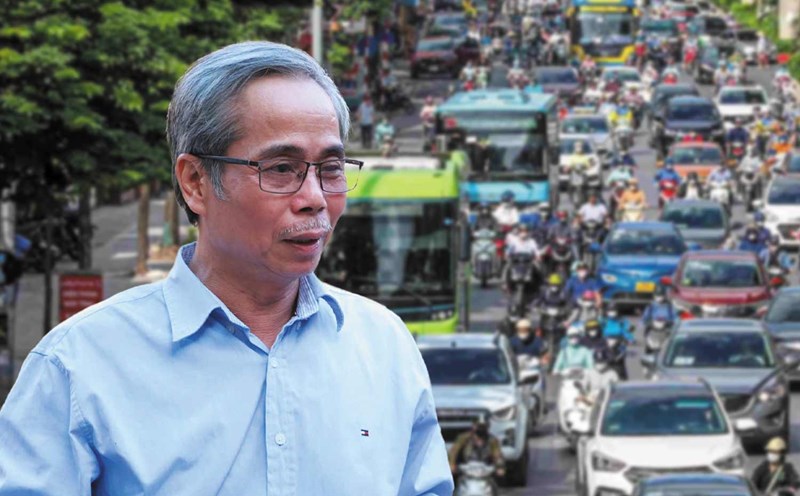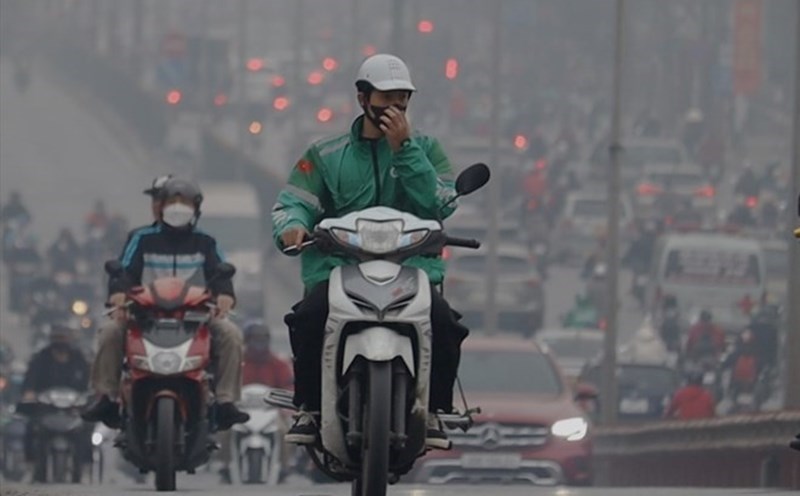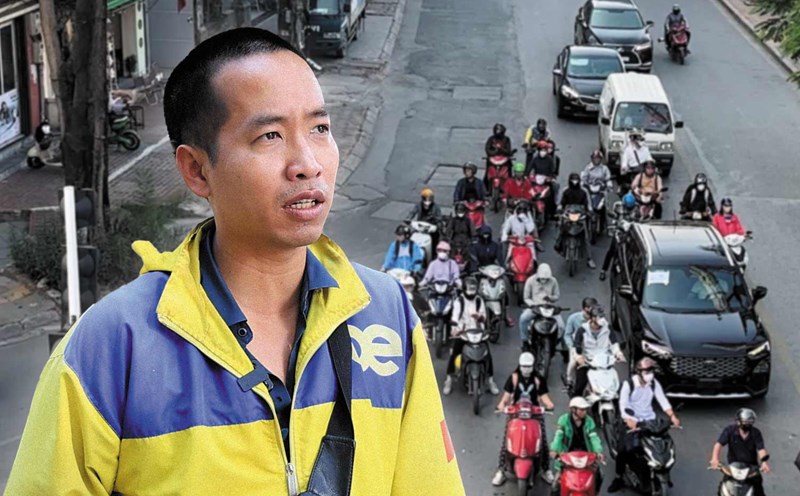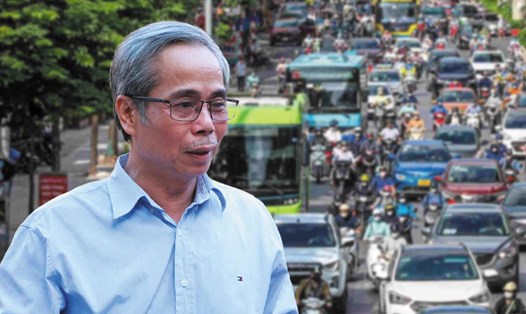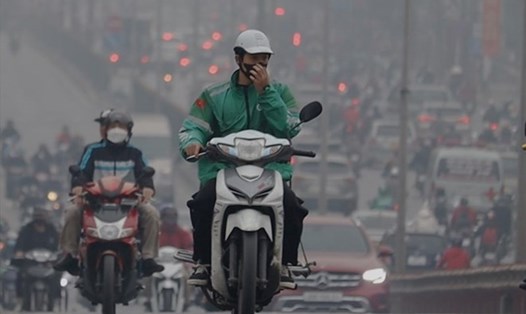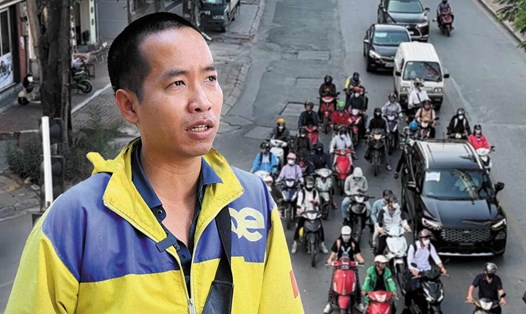Many concerns from people who make a living by gasoline vehicles
To address environmental pollution from vehicles, from 2025, Hanoi will pilot a low-emission zone model, limiting the operation of gasoline-powered cars and motorbikes. The first pilot proposal is in Hoan Kiem district, the cultural and entertainment center of the capital. This proposal is receiving many comments from the people.
During his 7 years working as a technology motorbike taxi driver, Mr. Kieu Khanh (Ha Dong, Hanoi) often used a gasoline-powered motorbike to go to work. His job requires him to travel to many places, from one district to another, so Mr. Khanh often traveled to Hoan Kiem district. When he heard about the proposal to limit gasoline vehicles in this area to protect the environment, Mr. Khanh agreed with the city's policy. However, according to Mr. Khanh, this route also encountered many difficulties.
"If gasoline vehicles are restricted, everyone will be affected, from those who use this means of transportation to those who earn income from motorbikes," Mr. Khanh shared.
Every day, from 7pm to 2-3am, Mr. Hoang Van Hanh (My Duc, Hanoi) goes out on his old motorbike to sell snacks in Hanoi's Old Quarter. At the age of over 60, not healthy enough to do other heavy work, Mr. Hanh can only rely on this job to make a living. Therefore, when he heard the city proposed to ban gasoline-powered vehicles in Hoan Kiem district, Mr. Hanh couldn't help but worry.
“My main job is to make a living as a street vendor. If the city bans motorbikes, I don’t know what vehicle to use because I sell popcorn, so I have to travel a lot, from one place to another. If I go by bicycle or electric car, I can’t go because the goods I sell are heavy and the car is low and weak, so I can’t carry them,” said Mr. Hanh.
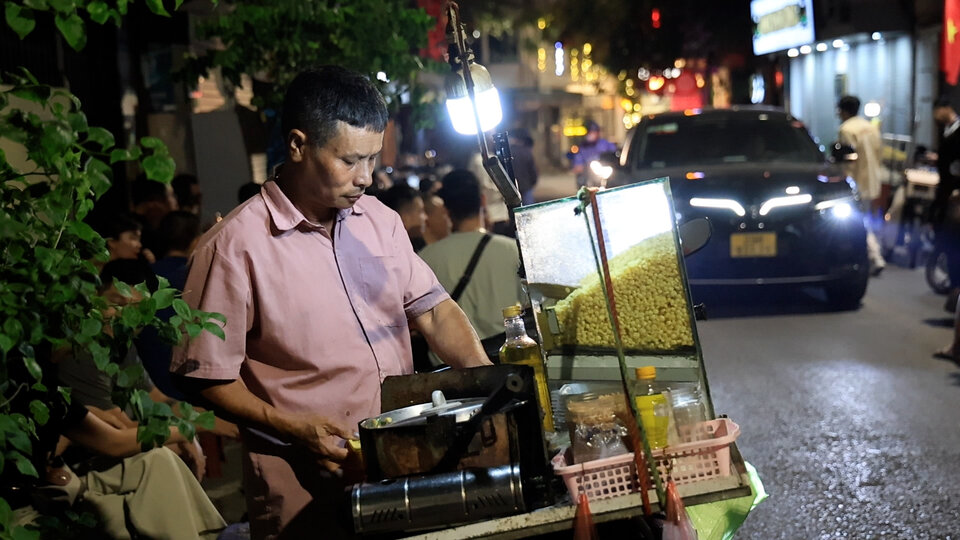
Having to travel to many places to deliver goods, when hearing the information about the restriction of gasoline-powered motorbikes in Hoan Kiem district, Ms. Pham Thuy Ha (Dong Da, Hanoi) also said that converting gasoline-powered motorbikes to electric motorbikes will face many difficulties and limitations because not all workers have the economic conditions to switch to new vehicles.
There needs to be a specific roadmap to ensure people's lives.
Although there are still many difficulties in converting gasoline cars to electric cars, experts say that, given the current state of air pollution, reducing exhaust emissions is a very necessary measure.
According to Associate Professor, Dr. Bui Thi An - former member of the National Assembly's Committee on Science, Technology and Environment, she strongly supports Hanoi's goal of building a low-emission zone. However, to achieve this goal, there must be a roadmap and accompanying conditions.
“If we want people to reduce personal vehicles, we must first have alternative means of transport for civil servants and public employees, and then alternative means of transport for those who make a living by motorbike. How can we implement the proposal to replace and limit motorbikes without affecting the lives of these people?”, said Ms. An.
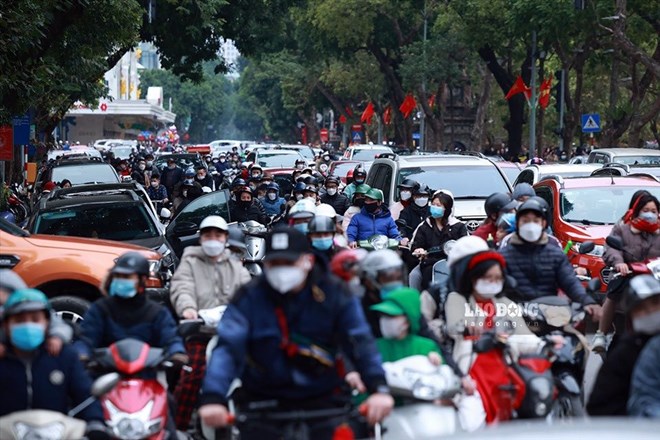
Dr. Nguyen Xuan Thuy - former Director and Editor-in-Chief of the Transport Publishing House - said that currently, the number of electric motorbikes, buses, and electric taxis is increasing, so we need to encourage people to buy and use electric vehicles. At the same time, there needs to be support from the state to borrow capital to help people switch to green vehicles; expand land funds to build public electric vehicle charging stations; increase connectivity of the public transport system running on clean fuel to meet people's travel needs.
If solutions are implemented synchronously, reducing difficulties in converting gasoline vehicles to electric vehicles for people, the city's policy will certainly receive consensus and response from everyone.

